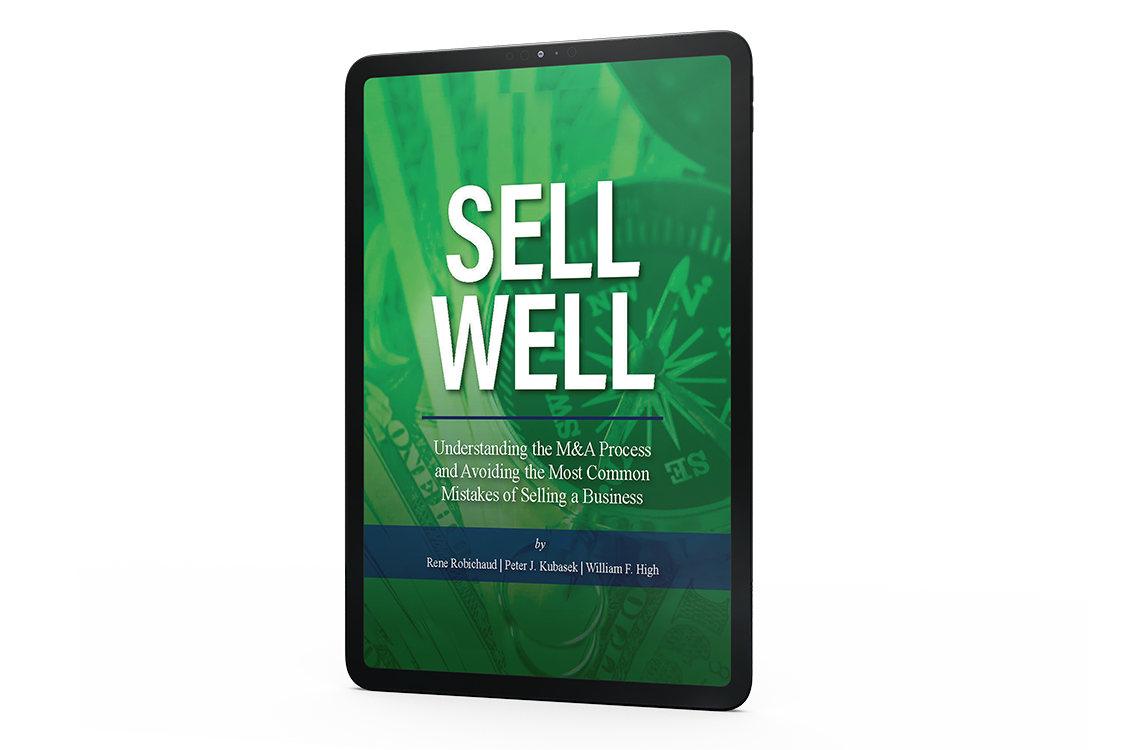ArkMalibu Industry Snapshots, Third Quarter 2023 (Released 10/26/2023)
We invite you to read our M&A market analysis and access the Market Monitor links below, where you may download detailed reports containing M&A trends and data from 17 industries. Please feel free to contact us at (513) 583-5413 to discuss how the information presented in each report may relate to your business and its own unique set of value drivers.
U.S. & Canada M&A Overview – Deal activity remains subdued while median deal size and multiples rise due to a focus on higher quality businesses
- M&A deal volume in Q3 fell both QoQ and YoY, while the median Enterprise Value/EBITDA multiple rose over both periods
- Q3 2023 saw 3,222 deals, representing a 12% drop QoQ and a 28% drop YoY
- The third quarter’s median EV/EBITDA multiple came in 32% higher than Q2 and 26% above Q3 2022
- The total reported transaction value in Q3 of $396bn increased 11% from Q2 and 25% from Q3 2022
- As with the previous quarter, Q3 saw safer deals continue to trade while riskier deals failed to get done, causing the M&A deal count to drop to its lowest level since Q2 2020
- Following the mini banking crisis, many traditional lenders are tightening underwriting standards for loans to ensure the security of their deposits; investors seeking loans for riskier acquisitions are forced to look to private credit funds and other nontraditional lenders to finance these deals, who charge higher rates for these loans (roughly +350 basis points)
- Similar to last quarter, a disproportionate number of larger deals were executed in Q3; the median capital invested on reported deals was up 112% YoY to $106mm
- The observed increase in the median EV/EBITDA multiple is partially attributable to this skew toward larger, safer deals which tend to command higher multiples
- M&A activity is expected to strengthen in Q4 2023 as acquirers become more comfortable with the macroeconomic environment, gaining more certainty about the lower risk of interest rate hikes and the ability to secure financing despite lingering recession fears
Global M&A Overview
- Globally, Q3 saw deal count fall 10% QoQ and 21% YoY ; capital invested through M&A grew 32% compared with Q2 and 6% compared with Q3 2022
- This falloff in M&A activity is closely aligned with that of the U.S. and Canada, reflecting the global nature of the headwinds facing the dealmaking market
- The median EV/EBITDA multiple increased YoY by 12%, driven by a similar size and risk bias as in the U.S. and Canadian markets
U.S. & Canada M&A Overview of Selected Players
- Strategics
- Q3 2023 saw total acquisitions made by strategic acquirers in the U.S. & Canada decrease 7% QoQ and 10% YoY
- The QoQ decline was led by the Healthcare Technology Systems (-37%), and Semiconductor (-33%) sectors
- These declines were mitigated in part by higher deal counts in Agriculture (+120%), and Apparel & Accessories (+33%)
- Q3 2023 saw total acquisitions made by strategic acquirers in the U.S. & Canada decrease 7% QoQ and 10% YoY
- Private Equity
- The number of exits by PE firms in Q3 2023 dropped 6% QoQ while exit value plummeted by 41% QoQ
- PE exit deal count and deal value both remain well below their pre-pandemic averages, with Q3 2023 showing a decline of 19% and 53% from the 2017-2019 averages, respectively
- After four successful IPOs for PE-backed companies in Q3 2023, and given the widening valuation gap between public and private companies, more PE firms are expected to look to the public markets for exits in the foreseeable future
- There are currently 19 PE-backed companies that have filed S-1s and have yet to IPO
- Both deal count and deal value for PE acquisitions in Q3 2023 fell QoQ and YoY, dropping slightly below pre-pandemic levels
- The amount spent on platform acquisitions declined 21% QoQ and 43% YoY, due largely to more stringent lending criteria and higher interest rates
- The percentage of debt to total deal value for LBOs has declined from 51% in Q3 2022 to 43% in Q3 2023, reflecting the lower risk tolerance of lenders
- Valuations paid by PE firms declined slightly in Q3 2023, with the median EV/EBITDA multiple falling 5% from the average of the last few years; this is partially a function of the tilt toward smaller ‘add-on’ deals with lower multiples as platform deal count declines
- The amount spent on platform acquisitions declined 21% QoQ and 43% YoY, due largely to more stringent lending criteria and higher interest rates
- The number of exits by PE firms in Q3 2023 dropped 6% QoQ while exit value plummeted by 41% QoQ
- Venture Capital
- Q3 2023 saw the lowest overall venture investment value in the last six years while exit value surged to its highest level since Q4 2021, driven by two large IPOs
- Total early-stage investment deal value fell QoQ (-26%) and YoY (-44%), while deal count fell less substantially both QoQ (-16%) and YoY (-24%), implying a lower average investment value
- After a steady decline from Q2 2021’s peak of $267.1bn in VC-backed exit value, sinking as low as $6.6bn in Q2 2023, exit value came roaring back in Q3 2023 with a total of $35.8bn, representing an increase of 541% QoQ and 218% YoY
- Over half of this total exit value came from the Klaviyo and Instacart IPOs
- Q3 2023 saw the lowest overall venture investment value in the last six years while exit value surged to its highest level since Q4 2021, driven by two large IPOs
U.S. Equity Market Overview

- Major publicly traded stock indexes declined across the board in Q3 2023, including the S&P 500, which declined 3.7% in Q3 for a 1-year return of 18.7%
- This decline is due largely to the persistence of high interest rates, though September is also historically regarded as the worst month for the market ; there was not a clear winner between growth and value for the quarter as the Russell 1000 Growth index beat its value counterpart while the Russell 2000 Value beat the equivalent growth index
- Despite this decline, the market still sits near the highs reached in late 2021, with the S&P 500 mark at the end of September being only 7.0% off the December 2021 record
- Declines in these indexes were mitigated by the strong performance of the Energy sector and large cap tech stocks
- Growth in oil prices drove the energy sector to post the highest return of all sectors in the S&P 500, finishing Q3 with a quarterly gain of 12.2%
- Many large tech stocks have benefited from investor interest in the AI arms race; NVIDIA is the most extreme example of this trend, posting a 204% YTD return as of September 29th
- The Real Estate and Utilities sectors trailed the rest of the pack in Q3, with QoQ declines of 9.7% and 10.1%, respectively, due in large part to financing difficulties stemming from elevated interest rates
- Q3 earnings for S&P 500 companies are expected to come in 1.3% higher YoY per consensus estimates, buoyed by strong earnings growth in Communication Services
- The S&P 500 forward 12-month P/E ratio is 18.1x which represents a 2.3% premium to the 10-year average of 17.7x
- After experiencing a significant slowdown, the IPO market has begun to heat up in the second half of 2023, with 36 IPOs completed and $8.6bn generated in proceeds in Q3 2023; this comes in slightly below Q3 2022’s count of 39 IPOs but significantly outpaces the $2.5bn in proceeds generated during that period, representing a 238% increase in proceeds
- Q3 2023’s high total proceeds are due in part to a trio of highly anticipated IPOs, with Instacart, Arm, and Klaviyo all listing in September
- Q4 is expected to continue Q3’s strong performance with another trio of high-profile listings, with Birkenstock, Stripe, and Reddit all expected to complete IPOs by the end of the year
Economic Update
- In the August report, U.S. CPI was 0.4% higher MoM for a 3.7% increase YoY, slightly above consensus expectations; core CPI (excluding food and energy) came in higher by 0.3% MoM, representing a 4.1% rise YoY
- Prices for services are up 5.7% on a YoY basis, while energy is down 0.5% YoY, led by a 19.9% YoY drop in utility gas prices
- It appears that the Fed has been successful in slowing wage growth with rate hikes as hourly wage growth has plateaued over the last two months, sitting at a 4.2% YoY increas e (watch for increases coming from strike actions)
- Minutes from the Federal Reserve’s September meeting indicate that officials are cautiously considering another rate hike this year to achieve their 2% target inflation rate, but are worried about the potential to cause a spike in unemployment and trigger a recession
- While not announcing a rate hike at this meeting, a majority of participants judged that one more increase in the federal funds rate would be warranted; the median “dot plot” Fed forecast for its 2023 rate plan is 5.6%, representing a 25 basis point increase from the current Fed Funds rate
- Rate increases continue to weigh down the housing market, with existing home sales down 15.3% YoY as of August data; 30-year mortgage rates reached 7.2% in September, up from 6.0% one year prior
- Bonds have largely held steady over the course of the year, with the S&P Aggregate Bond Index up 1.1% in 2023 and down just 0.6% QoQ
- The Federal Reserve expects real GDP growth to come in at 2.1% for full-year 2023, above their previously released expectation of 1.0% from July
- U.S. GDP growth in Q3 came in at a susprisingly hot 4.9%
- The U.S. ISM PMI manufacturing index increased by 1.4% in the August report, indicating a reversal of the declines seen over the last few months ; the FRB’s Industrial Production Index (which measures current real output ) showed a more modest increase of 40 basis points MoM
- The September jobs report showed 336,000 nonfarm jobs added, led by growth in Leisure and Hospitality, Government, and Healthcare; the unemployment rate remained flat MoM at 3.8%, up from 3.5% in July
- Measures reflecting the total number of people in the workforce such as the employment population ratio and the labor force participation rate have remained steady in recent months, holding at 60.4% and 62.8%, respectively
- Given the headwinds faced by the global economy coming out of the pandemic, the International Monetary Fund predicts global growth to slow from 3.5% in 2022 to 3.0% in 2023 and 2.9% for 2024
- The IMF’s predictions for inflation follow a similar downward trend, which they are expecting to decline from 8.7% in 2022 to 6.9% in 2023 and 5.8% in 2024
- After recession fears reached their peak earlier in the year, the perceived recession risk reported by surveyed economists has begun to decline sharply, with consensus estimates for August coming in at a 48% chance of recession in the next year, down from 54% in July
- Roughly half of surveyed economists believe that the Fed will start cutting rates in the second quarter of 2024 as economic growth cools
- Despite this more positive rate outlook, the yield curve has remained inverted (10 year less 2 year) for fourteen months, and even short inversions have historically preceded recessions in the United States; the negative delta has decreased in recent months, coming in at -44 basis points to end the quarter
Sources: ArkMalibu, Bureau of Labor Statistics, Federal Reserve, EY, Refinitiv, S&P Capital IQ, The Wall Street Journal, The International Monetary Fund, ISM, National Association of Realtors, Bankrate, Fox Business, US News, LPL Research, Yahoo Finance, Forbes, Pitchbook and other publicly available news sources
ArkMalibu’s Approach
Our team at ArkMalibu is proud of our conflict-free business model, M&A expertise, and value-added processes, which continue to deliver results that far exceed the expectations of our clients, the one-time sellers. We would be delighted to listen and then help you navigate the M&A market in achieving your goals.


